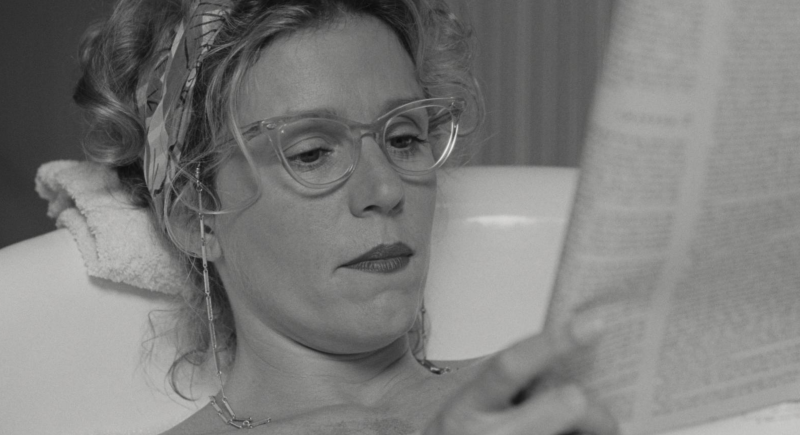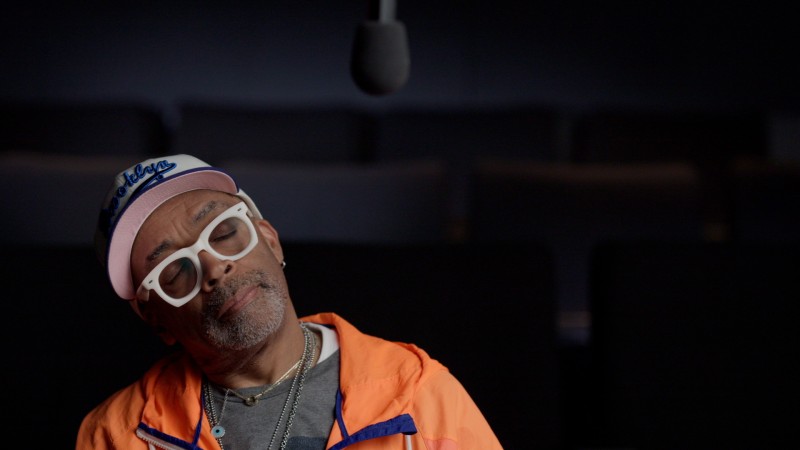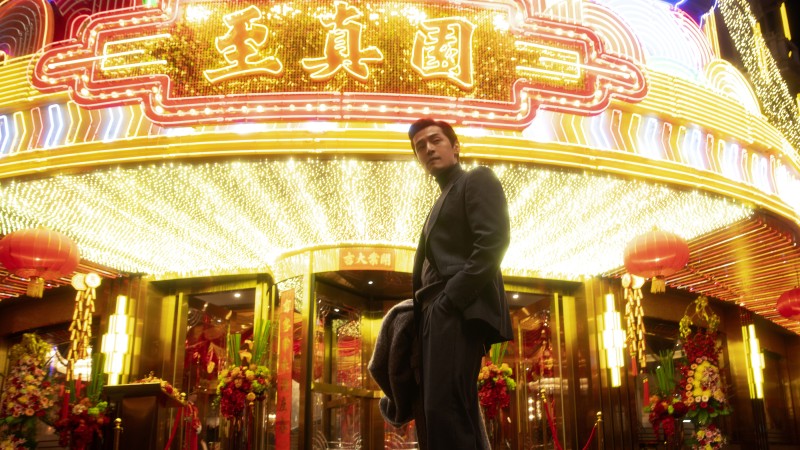Black Cinema at Its Birth

American cinema is over 125 years old, and African Americans have been a part of it from the beginning. This participation has often been fraught, stymied, and curtailed, but the desire to use motion pictures to craft a self-image has motivated African American filmmakers and performers since the medium’s emergence. At last a fuller picture of this long and intricate history is coming into public awareness. What Kino Classics has given us in Pioneers of African American Cinema—a series of thirty-four films, fragments, and other material expertly curated by scholars Charles Musser and Jacqueline Najuma Stewart, released in 2016, and now playing on the Criterion Channel—is a rich testament to the range of films produced primarily for segregated black audiences in the first half of the twentieth century. Known as “race films,” these movies featured mainly all-black casts and many were made by black filmmakers, answering the need for a self-determined cinematic image that was keenly felt at the time. In 1920, Lester Walton, the arts critic for the African American newspaper the New York Age, championed the innovative “race promoters” who had been endeavoring to “depict our men and women in a favorable light and as they really are; not solely as hewers of wood and drawers of water and using a dialect foreign to the average colored American.” The results were varied and often controversial, but race films shared a fundamental premise: instead of using their black subjects as props or objects of ridicule, these films placed their lives front and center.
To an extent, mainstream American culture motivated race filmmakers to fashion a kind of countercinema. They often adapted aspects of the conventions of Hollywood storytelling to suit their production conditions while also creatively developing a formal language that responded to the concerns of black life. Writing on the great filmmaker Oscar Micheaux, historian J. Ronald Green noted that he hit a “straight lick with a crooked stick.” Micheaux’s formal ingenuity—built on genres such as the melodrama, crime drama, and romance—constituted an original engagement with the medium that mined its potential to speak to the particulars of his subjects. The embedded flashbacks in his earliest surviving feature, Within Our Gates (1920), present complex, layered lives and afterlives, and its crosscutting and temporal logic directly refute the racist claims of The Birth of a Nation (1915) by showing the reality that that film’s director, D. W. Griffith, chose to elide. Using Griffith’s own language to disprove his racist assertions, Micheaux’s portrayal of a white lynch mob belies Griffith’s depiction of a gallant Klan. As Jane Gaines observes, Micheaux “chooses to show what blacks knew and northern whites would refuse to believe—the total barbarism of the white mob.” That The Birth of a Nation continues to be held as a landmark achievement in film form is further reason for taking seriously how race filmmakers resisted its version of history—imbricated with its aesthetic standards—with their own innovative approaches.

Above: Within Our Gates
While Micheaux has become synonymous with race films, Pioneers of African American Cinema presents a diverse array of films and filmmakers, which taken together refutes any monolithic notions of “blackness.” Indeed, race films defy easy categorization. They range from melodramas like Ten Nights in a Bar Room (1926) and The Scar of Shame (1929), to comedies like A Reckless Rover (1918) and Hot Biskits (1931), to crime thrillers like The Girl from Chicago (1932) and Ten Minutes to Live (1932)—all offering different images of black life. Their formal structures vary as well. To take one elusive case, Richard Maurice’s Eleven P.M. (1928) is an experimental melodrama whose dreamscapes and flashbacks evoke Micheaux’s silent films, but whose avant-garde aesthetic and surreal effects make it singular in the history of race film. The gathering of these works in one compilation is a major feat of archival discovery and research, and of presentation. What emerges is a wild sense of the possibilities for an African American cinema that ran alongside, merged with, and argued against the dominant white cinema of Hollywood.
Micheaux himself was not without controversy. In some cases, he was heavily criticized by black elites on the grounds of representation—positions and debates that have echoes to this day. For example, Micheaux was taken to task in the African American press for his depiction of a false preacher—a con man posing as a pastor, played by the great Paul Robeson—in Body and Soul (1925). The stereotyping of black people in the white imaginary was bad enough, the argument went, so why participate in such degradation by furnishing further negative depictions? In response, Micheaux argued that realism, and not some false idyll, was the key to the progress of the race: “I am too much imbued with the spirit of Booker T. Washington to engraft false virtues upon ourselves, to make ourselves that which we are not. Nothing could be a greater blow to our own progress. The recognition of our true situation will react in itself as a stimulus for self-advancement.” The cinema gave race filmmakers an opportunity for self-representation and the ability to assert an identity for African Americans that was multifaceted while also defying the racist caricatures so prevalent in Hollywood.
However, self-representation could never be a straightforward concept in race film. Most of the commercial companies that produced these movies were interracial ventures, with very few being entirely owned or operated by African Americans. Yet it would be a mistake to presume that the films made by even white-controlled companies were more suspect or compromised than those that were more clearly authored by African American filmmakers, however motivated those companies may have been by the prospects of capitalizing on the black theatrical audience. To do so would be to presume not only an essentialist view of race but also an overdetermined role of the director. Indeed, many of these films can be best understood as collaborations among producers, directors, camera operators, and performers, all aiming to appeal to black audiences with an image of black life that stood in clear contradistinction to vicious mainstream misrepresentations. One of the gems in the Kino Classics collection, The Flying Ace (1926), made by white filmmaker Richard E. Norman in Jacksonville, Florida, is a narrative set in an exclusively African American world. The drama centers on a returning war pilot and his rival for the affections of the local railroad stationmaster’s daughter, a character modeled on famed African American aviator Bessie Coleman. An entertaining crime drama with its share of action, comedy, and romance, The Flying Ace places its fictional narrative in dialogue with the real-life heroism of black Americans that would have been familiar to its audience.
One
of the pleasures of the collection is that it reveals the breadth of African
American performers working not only in cinema but also in the theatrical contexts
on which it often drew. These movies offer a privileged glimpse of early
twentieth-century African American performance, from its stars to its unnamed
bit players and chorines. Major figures such as Lawrence Chenault, Charles
Gilpin, Lorenzo Tucker, Evelyn Preer, Flournoy Miller, and Robeson can be seen
in these films. And black celebrities like model, singer, and actor Francine
Everett (Dirty Gertie from Harlem U.S.A.)
are presented as the stars Hollywood wouldn’t have allowed them to be. Herb
Jeffries—who died in 2014, a reminder that these films are more recent
artifacts than we might otherwise think—sang with Duke Ellington’s orchestra and
starred as a singing cowboy in a series of black-cast westerns for white
producer Richard C. Kahn, including The
Bronze Buckaroo (1939). The three Moses sisters, who worked as Cotton Club
chorus dancers, appeared on Broadway and in race films—Lucia Lynn Moses stars
in the Colored Players Film Corporation of Philadelphia’s The Scar of Shame, and Ethel
Moses stars in Micheaux’s Birthright (1938)—and
their story is included in the collection in a rare oral history made by
archivist and scholar Pearl Bowser, herself a pioneer of African American film
history. Pioneers encapsulates the
interconnected world of black entertainers in the first half of the
twentieth-century and makes available a range of material that had previously
resided only in the archives.
As powerful as these performances are, the significance of this collection lies equally in its capturing of aspects of culture seldom seen on-screen. One of the consequences of these films’ restricted budgets was that filmmakers often shot outside the studio and used nonprofessional actors alongside professionals. Because of these constraints, we see shots of actual streets, shops, churchgoers, and other traces of regionally diverse African American communities. So while, in Body and Soul, Micheaux shows Robeson’s false preacher delivering a fiery sermon to a congregation filmed on set, he also intercuts shots of actual rural churchgoers, putting his movie in direct conversation with the people it seeks to represent. Likewise, Spencer Williams’s The Blood of Jesus (1941) is a fiction film that is woven around extended scenes of distinct religious practices enacted by Reverend R. L. Robertson and his Heavenly Choir and members of the Texas community in which the film was shot.
Other films focus even more explicitly on real people and places. Pioneers includes the home movies of Reverend Solomon Sir Jones, a Baptist preacher from Oklahoma who, between 1924 and 1928, documented African American communities across the country as powerful sites of self-determination, and films by James and Eloyce Gist, who made fictionalized biblical parables like Hell-Bound Train (circa 1930) for the purpose of demonstration during sermons. These are unique documents. Also among the rich array of nontheatrical moving pictures are the anthropological fieldwork films of renowned author Zora Neale Hurston, who captured stunning images of Alabama and Florida in 1928, and of the Gullah people in a Sea Island community in South Carolina in 1940. Here, a direct connection becomes visible between Hurston’s latter film and the culture at the center of Julie Dash’s landmark feature Daughters of the Dust (1991), also playing on the Criterion Channel.
Pioneers also suggests just how many of the treasures of early African American filmmaking have been lost. The collection includes the surviving fragments of the last film of the Lincoln Motion Picture Company, one of the first race-film companies, led by brothers George and Noble Johnson—arguably the first black movie star, who also had a prolific and long career as a character actor in Hollywood. Only four minutes of By Right of Birth (1921) are extant, but the footage is remarkable—in this short running time, we see comedy, action, romance, and intrigue. Watch for the brief superimposition of Noble Johnson at the beginning, in the upper left corner of the frame. Also featured is the only extant reel of Richard E. Norman’s Regeneration (1923), a thriller set on the high seas. The extreme nitrate decomposition of Regeneration is an acute reminder of the fate of most silent-era films—rates of survival are even lower for black-cast films, for which fewer prints were struck—and a testament to the preciousness of the material that is available. Indeed, none of the films made by the earliest African American filmmakers of the 1910s—including George W. Broome, William Foster, Hunter C. Haynes, and Peter P. Jones—are known to survive.
Because of this, black film history seems to begin in medias res, and some work is required to understand and appreciate aspects of these films that can be opaque and illegible to contemporary audiences. The oldest film in Pioneers is a comedy produced by the Chicago-based and white-owned Historical Feature Film Company (later purchased and distributed by Ebony Film Co.) for general release, Two Knights of Vaudeville (1915), which trades in racist tropes but is also a fascinating depiction of both the vaudeville stage and an imagined all-black performance space. In showcasing these two separate venues, Two Knights of Vaudeville enacts one of the enduring tensions of race film: its contested forms of exhibition. Comedy was particularly susceptible to critique, and Two Knights of Vaudeville and other shorts drew the ire of the Chicago Defender for their buffoonish portrayals, leading the paper to proclaim, “We want clean Race pictures or none at all.” Yet even for their detractors, the largely intraracial settings in which most race films were seen afforded kinds of representation that would have been—and were often—eschewed in interracial contexts. This is evident in the black press’s sharply critical reading of the general-release comedies produced by Ebony—also represented in Pioneers by Mercy, the Mummy Mumbled (1918) and A Reckless Rover (1918)—despite African American businessman Luther J. Pollard being at the helm. The Defender cautioned its readers, “Keep your money in your pocket and save that dime as well as your self-respect.” Complicated and persistent negotiations of performance and reception undergird these movies and others like them.

This collection preserves risky and complex forms of racialized performance. Take the incorporation of black actors in blackface makeup in Micheaux’s The Darktown Revue (1931), one of the director’s first sound films, and his dramatic feature Ten Minutes to Live (1932). To twenty-first-century eyes, this seems incompatible with Micheaux’s commitments as a “race man.” And yet these moments encapsulate so many of the tensions being negotiated at the time, extending from ragtime-era African American reimaginings of white-performed minstrelsy. The Darktown Revue includes a comedic “Hard-Shell Sermon” of malapropisms, as if taken from the olio portion of a minstrel show, performed in blackface by black stage veteran Amon Davis. The short film also preserves a comedy routine by two major vaudeville performers, Tim Moore and Andrew Tribble. Tribble was a famed female impersonator who performed with the Old Pekin Stock Company and toured with Cole and Johnson at the turn of the century; Moore would go on to star as Kingfish alongside Spencer Williams in the television adaptation of Amos ’n’ Andy (at the time of The Darktown Revue, he was married to Gertie Brown, who appears in the recently rediscovered 1898 film Something Good—Negro Kiss). These comedic routines defy uplift dictums. Micheaux’s motivations are hard to discern in a film that seems to trade on antiquated and (by 1931) clearly compromised forms. Nonetheless, The Darktown Revue shows theatrical traditions that were simultaneously opportunities and constraints for black performers. The film features the popular Donald Heywood choir, whose leader worked closely with Micheaux across a number of films. The choir watches Davis’s “sermon” as if it were part of the act—yet are these seasoned performers amused? Are they disgusted? In the film, their reactions, as well as their song selections, are confusing: Are they celebrating folk culture or rebuking it ironically? It’s hard to resolve these contradictions but impossible to escape them.
Despite being a well-established field of study, thanks in no small part to the efforts of Musser and Stewart, African American film history is still pervaded with unknowns, and we are still learning about these films and their makers, performers, and exhibition environments. So much is yet to be written, especially concerning the end of this era. The decline of race filmmaking came about in the late forties and is usually attributed to the rise of integrationist politics and challenges, however slow and tentative in many places, to segregated public spaces. Nevertheless, the legacy of race film and the experiences of its audiences continued to inform black filmmaking through the rest of the twentieth century. Pioneers is a major step toward helping this history reach a wider audience, and it will no doubt serve as the groundwork for the next generation of scholars to better understand the complex ways that the cinematic image of African Americans was negotiated, asserted, and defined by an ardent set of filmmakers.
Pioneers of African American Cinema is now playing on the Criterion Channel.



